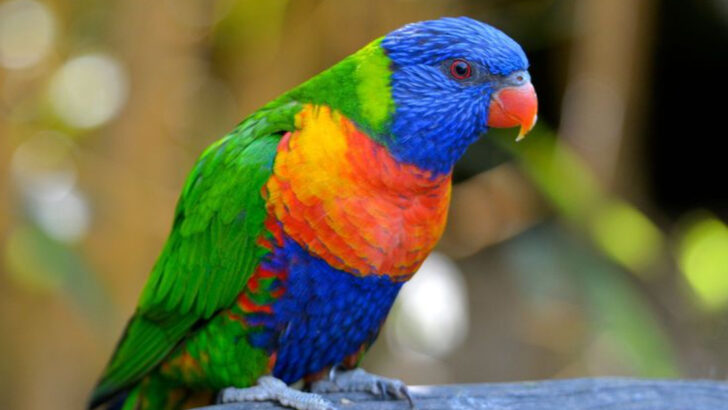The Rainbow Lorikeet is a stunning and vibrant parrot native to Australia. Known for its dazzling plumage and playful personality, this bird captivates bird lovers and casual observers alike.
With a mix of colors reminiscent of a painter’s palette, the Rainbow Lorikeet stands out in any crowd.
Their sociable nature and curious demeanor make them a favorite among avian enthusiasts.
From their unique feeding habits to their intricate social structures, the Rainbow Lorikeet offers a fascinating glimpse into the world of birds.
Discover ten intriguing facts about this colorful wonder.
Colorful Plumage
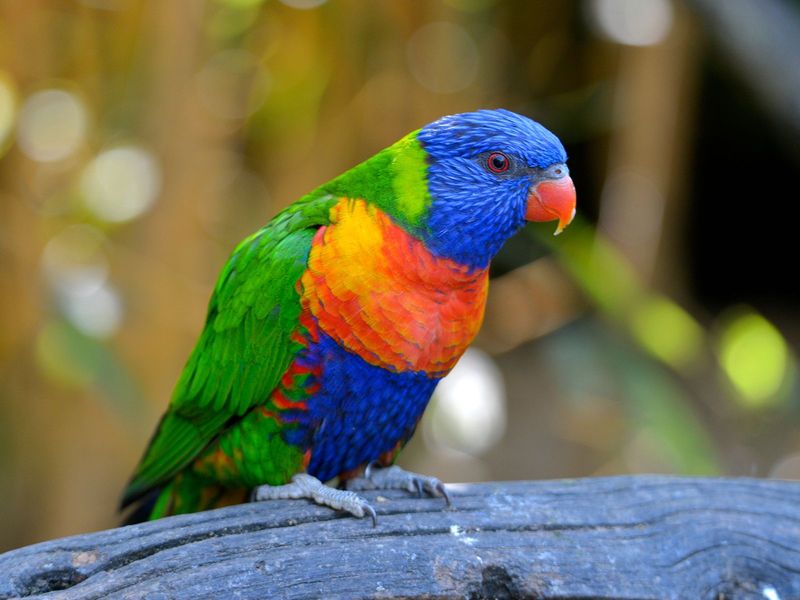
A Rainbow Lorikeet’s plumage is nothing short of a kaleidoscope. With hues that range from bright blues and greens to yellows and fiery reds, these birds are a living rainbow. Each individual feather is a masterpiece of color.
Their striking appearance not only makes them one of the most beautiful birds in the world but also aids in their identification among the dense foliage of their natural habitat.
Their vibrant colors serve an essential role in communication and mating rituals, ensuring these birds are always noticed, whether by potential mates or birdwatchers alike.
Unique Diet

Feeding a Rainbow Lorikeet is a unique experience. Unlike many parrots, these birds thrive on a diet primarily consisting of nectar and fruit. Their specially adapted brush-tipped tongues allow them to extract nectar from flowers efficiently.
This diet contributes to their active and playful nature, keeping them energetic throughout the day. It’s fascinating to watch them maneuver around a garden, exploring each flower.
The lorikeet’s diet is pivotal to their role in pollination, inadvertently helping to maintain the ecological balance in their habitat.
Inquisitive Nature
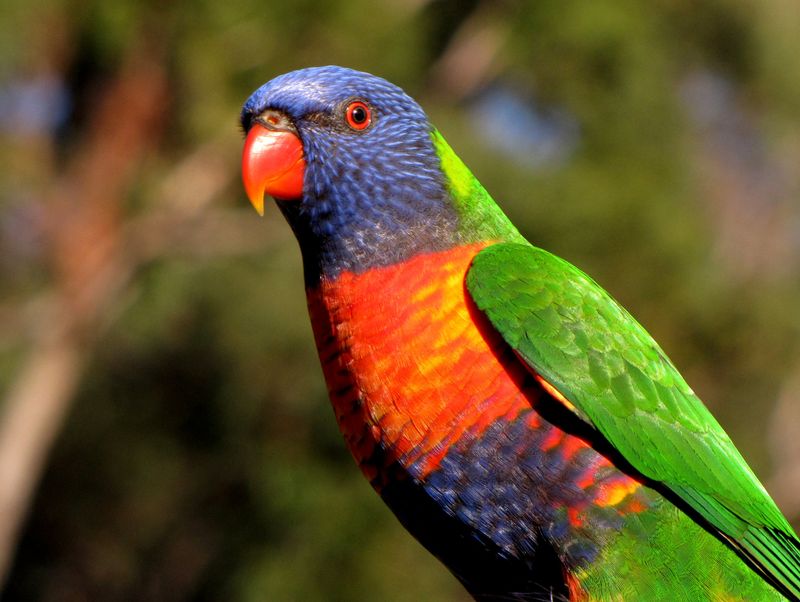
Rainbow Lorikeets are known for their inquisitive and playful behavior. These birds exhibit a curiosity that leads them to explore their surroundings thoroughly.
This trait makes them delightful pets, as they enjoy interacting with humans and other animals. Their antics, from hanging upside down to mimicking sounds, never fail to entertain.
Their playful demeanor is not just for show; it plays a significant role in their social structures, helping them bond with fellow lorikeets and other species.
Vocal Communication
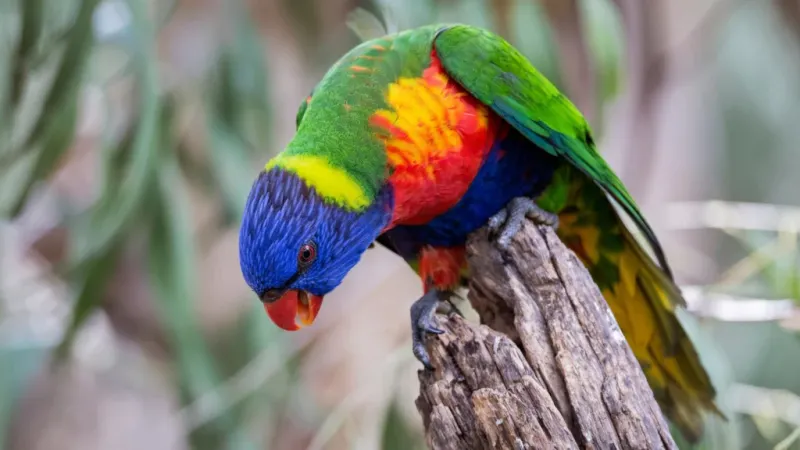
Communication among Rainbow Lorikeets is both vocal and visual. They possess a wide range of calls, from chattering to screeching, used to communicate with one another.
Their vocalizations are crucial in maintaining social bonds within flocks. The cacophony created by a group of lorikeets is unmistakable and can often be heard before the birds are seen.
Their vocal nature makes them easily recognizable, contributing to their charm as both wild birds and companions in the home.
Social Behavior
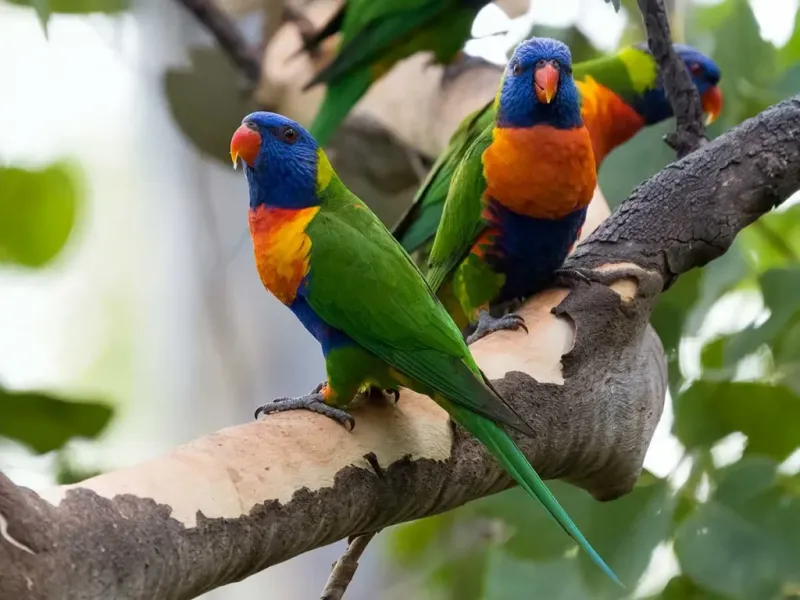
The social lives of Rainbow Lorikeets are as colorful as their feathers. They live in loud, sociable flocks that move together in synchronized harmony.
This social structure is essential for their survival, offering protection from predators and aiding in finding food. The hierarchy within these groups can be complex, often involving playful competitions.
Observing their interactions offers insight into the complex social structures of avian species, making them a favorite subject for bird behaviorists.
Nesting Habits
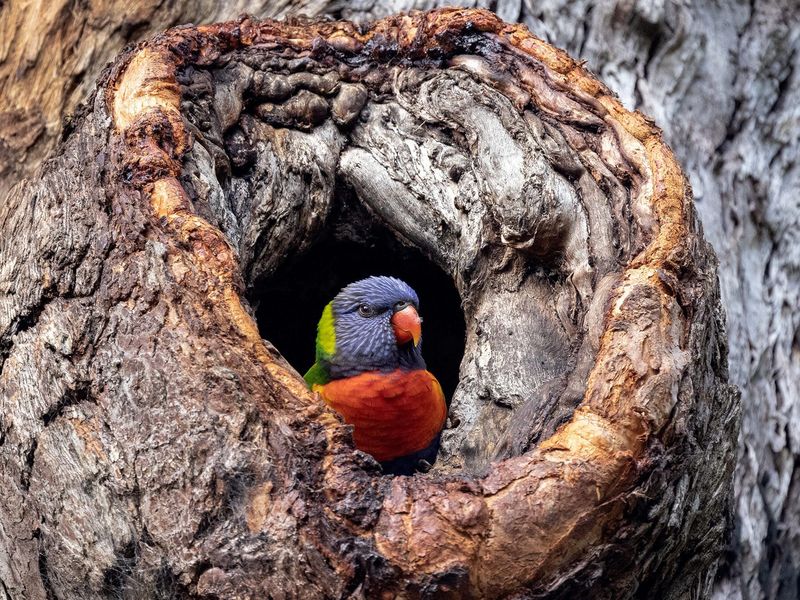
Rainbow Lorikeets have unique nesting habits. They typically choose tree hollows, often in eucalyptus trees, for their nests. The selection of the right nesting spot is critical for their breeding success.
These birds are known to aggressively defend their nesting sites from other birds, indicating the importance of these locations for raising their young.
Understanding their nesting behavior provides valuable insights into the species’ lifecycle and the preservation of their natural habitats.
Breeding and Lifespan
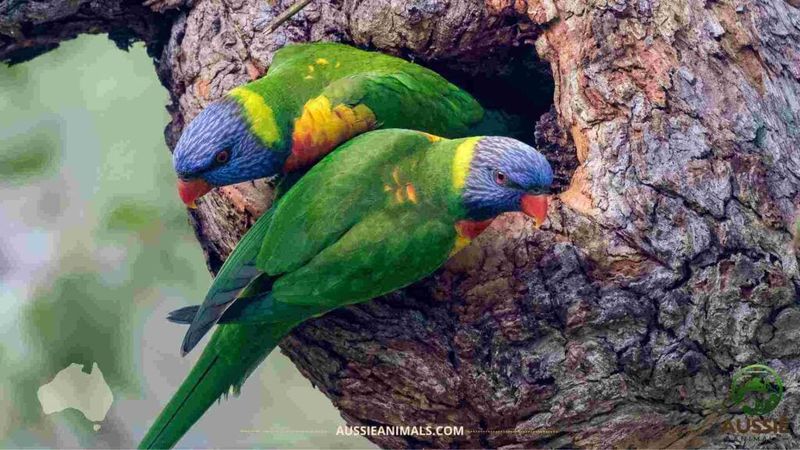
The breeding rituals of Rainbow Lorikeets are a testament to their vibrant lifestyle. Breeding pairs engage in elaborate courtship displays, characterized by mutual preening and synchronized movements.
Their commitment extends beyond courtship, as both parents play an active role in raising their young. This partnership ensures the survival and health of the offspring.
In terms of lifespan, these birds can live up to 20 years in the wild, a testament to their resilience and adaptability.
Habitat and Distribution
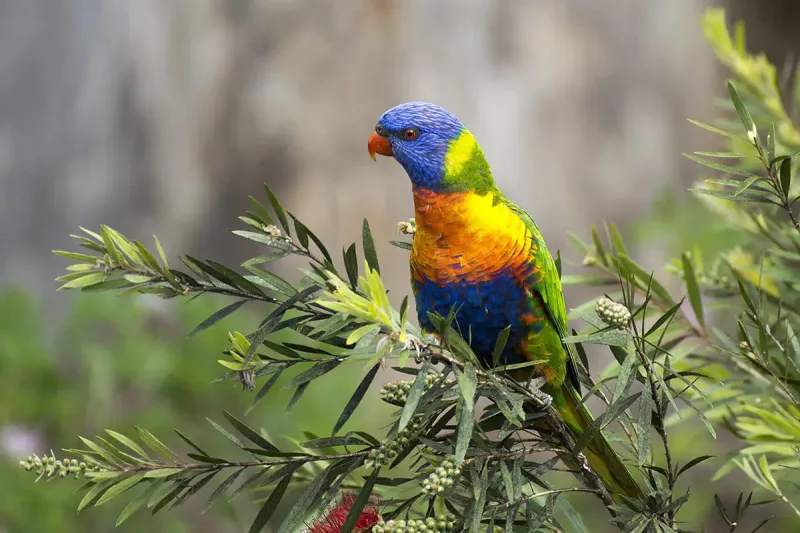
The Rainbow Lorikeet thrives in the coastal regions of Australia, where it enjoys the lush, vibrant landscapes that support its lifestyle.
These birds have adapted to a range of environments, from urban areas to forests, highlighting their versatility. Their presence is often an indicator of a healthy ecosystem.
Their distribution across such diverse habitats demonstrates their ability to adapt and thrive in different environmental conditions.
Role in Ecosystem

Rainbow Lorikeets play a vital role in their ecosystems, primarily through pollination. As they feed on nectar, they inadvertently transfer pollen from one flower to another, aiding in plant reproduction.
Their presence ensures the continuation of various plant species, reflecting their integral role in maintaining biodiversity.
Their contribution to the ecosystem underscores the importance of conserving their natural habitats to preserve ecological balance.
Conservation Status

While the Rainbow Lorikeet is not currently endangered, conservation efforts are pivotal in maintaining its population. Habitat loss and environmental changes pose significant threats.
Conservation programs focus on habitat preservation and public education to ensure these vibrant birds continue to thrive.
Protecting the Rainbow Lorikeet is essential for ecological health, as their presence is a marker of a balanced environment, benefiting both flora and fauna.

